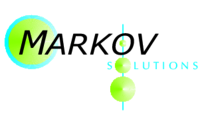
| ||
| MARKOV Solutions · experience · specials · CV | ||
|
Specialities
|
Interface design (in XML)MARKOV Solutions provides various services, such as Perl and C programming, for instance for XML and email processing. Although experienced in many fields, we do have a few outstanding specialities, one of which is on the subject of XML interface design. "XML" is a way of drawing lines on a sheet of paper: some say XML is synonymous for an "Open Standard", but in reality it is nothing more than a clean way to denote information. The data to be written on these `lines' still need to be described and published to make into an "Open" standard. Quite a number of alternative syntaxes for XML do exist, like YAML and JSON, but companies often elect XML because other companies picked XML before them. The strongest advantage of XML certainly isn't the XML syntax itself, but are the (commercial) standards which have been developed around it. Popular standards are, for example, XML schemas, WSDL, UDDI, SOAP, and XMPP. XML-Schemas and WSDLXML schemas formalize the structure and content of XML message in detail. It's an extremely powerful descriptive language, but at the same time too "inventive": the XML schema specification is exceptionally unreadible and complex. On the other hand, it is one of the more powerful interface description mechanisms available. Where the XML schemas are being used to describe the structure of the messages, the WSDL wraps that knowledge with facts about internet services, usually servers using SOAP. Do it yourself, or hire a specialist?Schemas and WSDLs are produced to exchange data with other people, or to collect data to store for a longer time. The specifications need to survive much longer than the single applications, because changes on multiple systems really hurt. Therefore, you must take the interface development very seriously at the earliest stage of a new project. Are you capable of designing your own schema, or will you hire a specialist for a few days? Try to answer the questions below, to test your schema knowledge. Move over "Answer" to get a pop-up which explains the answer.
All questions correctly answered? Then we can not add any quality to the development process of your interface. OfferDozens of (usually quite expensive) applications help you click together a schema or WSDL in no time. But that is not the complexity of interface design. The difficulty lays in the design of a message structure which can last and optimally defines the data exchanged or stored. To be able to design a good interface, you need to involve its developer as early as possible in the project. Only in the very early phases of the developement process, there still is a chance to bend the data structures in the right way. We have a few negative experiences with schema evaluation at-the-end. In that phase, companies are very offensive against the required improvements in the schema once the test-phase is entered. Those schemas get published full of avoidable mistakes. Don't let that happen to you! Get us in on the first day of the development of your XML application. With just a few days of support, we will avoid year worth of complications. 2025-10-31 | |